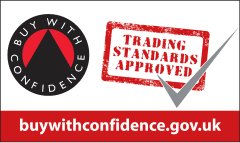With the seemingly inexorable rise in energy prices, initially due to increased demand as fewer lockdowns worldwide drove demand and, most recently, the war in Ukraine affecting supply, it’s time we talked about the benefits of induction cooking versus conventional methods.
What is induction cooking?
First off, the basics! An induction hob creates a magnetic field. When electricity is passed through the coil underneath the glass, electromagnetic energy is created. This passes directly into the pan, creating a current that produces heat. Essentially, the induction hob isn’t actually creating the heat – it’s the pan and coil together doing so. Your hob is just creating a magnetic field..
You should also know that this is the reason why you need to use induction-compatible pots and pans. It doesn’t mean you necessarily need special ‘induction’ pans – but you will need ones that are made of, or contain, iron, so that the magnetic field can interact with the iron in a pan’s base generating an electric current that transfers energy into the pan, creating heat.
So what are the benefits of induction cooking?
Speed & convenience
- Cooking using modern induction hobs is far quicker and more precise than other prevailing method in the UK, natural gas (about half the time to boil two same-sized pans of water).
- Cleaning of the glass hob is quick and simple using everyday household cleaning materials
The environment
- Cooking with gas has been shown to be devastating for the environment. It emits greenhouse gases like methane into the atmosphere, even when the hob is switched off. The noxious fumes created can get trapped in our homes are also harmful, especially for children as indoor nitrogen dioxide levels can spike quickly, reaching hazardous levels in a very short space of time.
- Conventional, non-induction hobs are quite wasteful, with some estimates stating that 50% of the energy being used is wasted. This is because the heat is dissipating around the pot or pan as you are heating it. Induction hobs only transfer heat to a surface it’s touching (i.e. the base of your pan) so there is not energy loss (and is what makes cooking with induction quicker)
Safety
- There’s no open flame or electric ring means there’s nothing to touch either by enquiring young minds, those with cognitive issues such as dementia or those prone to accidents
- Induction hobs can affect pacemakers Most common household electrical appliances are not a problem for pacemaker users, but the British Heart Foundation advises that users should keep a distance of at least 60cm (about arm’s length) from an induction hob while it is on as the electromagnetic field as they may interfere with pacemaker settings. It says that most people with a pacemaker should be able to use an induction hob if they follow this precaution
The costs
Clearly, your actual consumption costs will depend on the rates within your gas and electricity contracts. And, at first glance, you might think the Kwph costs point to the fact that gas is cheaper until you factor in the induction hob’s almost nil energy waste whilst being used. The flameless cooking’s much better thermal efficiency – which is being transferred directly to the pan (and not around the edges) – leads to reduced cooking times which means, by some estimates, it uses about half the energy of a conventional gas or electric hob.
Inspired?
At Nicholas Hythe, our aim is to make the property renovation process as simple, efficient, safe and stress free for clients wanting to improve their family’s home. So, if you’re inspired and ready to start the process of buying a new kitchen, start thinking about what it might look like and how you want to use it. Ask yourself, what do you need and want for it to function for you and your family? If you need help on deciding what style to go for, check out kitchen designs that never go out of style. Advice and design ideas are also found all over the Web, including Nicholas Hythe kitchen pictures gallery, our entire picture library and customer reviews on Google, and many other sites such as Pinterest, Houzz. Or check out our social media pages on Facebook and Instagram
Then when you’re ready, why not book an appointment with us, free and with no-obligation?






